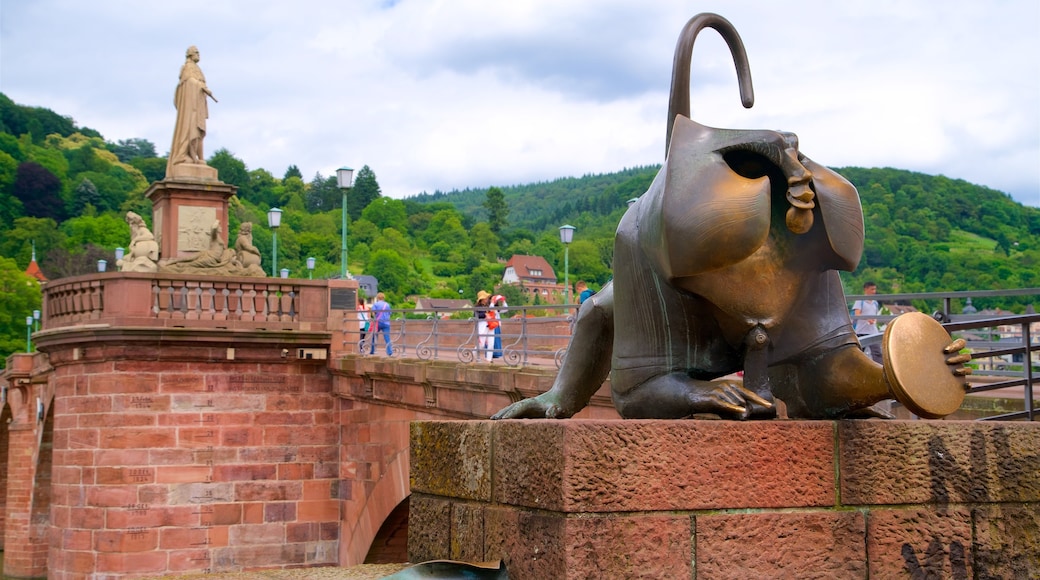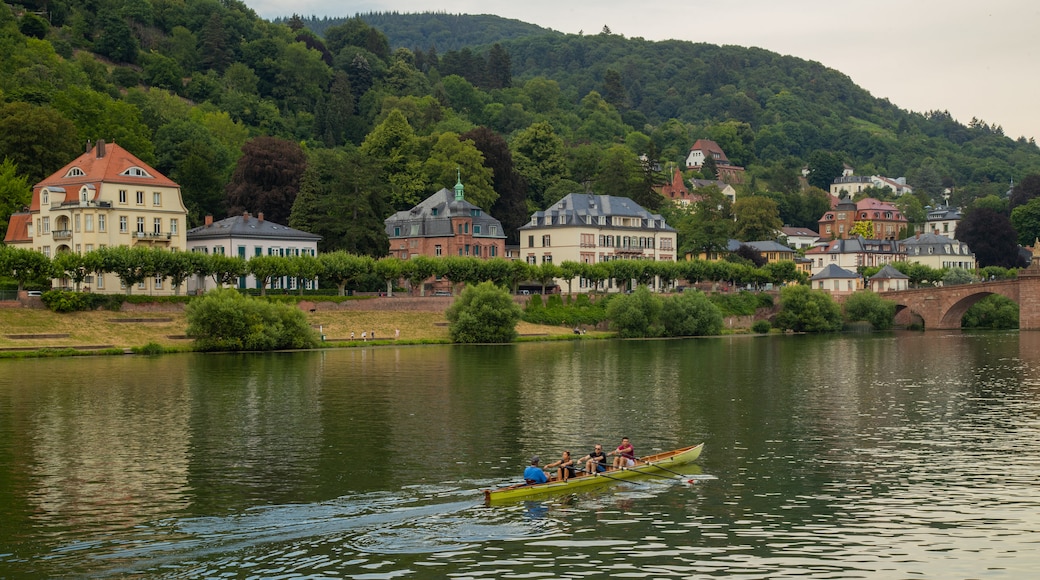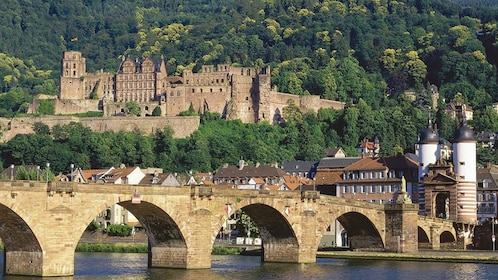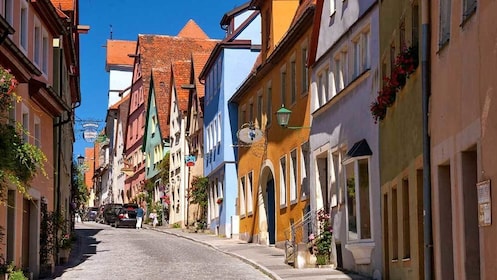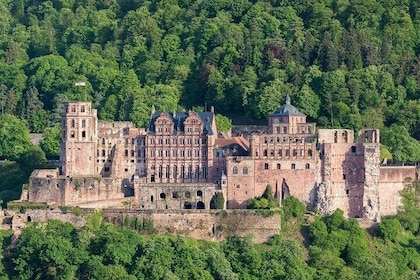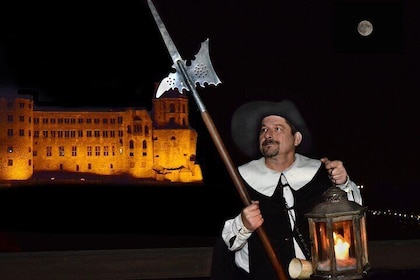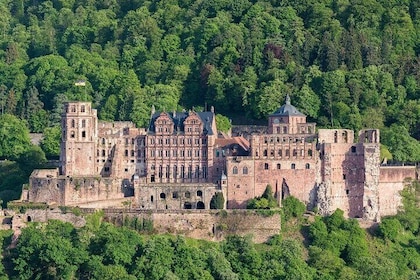At the entrance to Karl Theodor Bridge is the Brass Monkey (Brückenaffe), which is said to represent the equality between Heidelberg’s citizens and people from other cities. A monkey sculpture first appeared at the bridge in the 1400s, although it was removed during the Palatinate War of Succession. Today’s Brass Monkey is a 20th-century work of art by the German sculptor Gernot Rumpf.
The monkey is depicted on all fours with a raised tail. One hand is set in the mano cornuta (horned hand) position and serves to ward off the evil eye. In the other hand is a bronze disc-shaped mirror. Touching the monkey’s fingers is believed to endow good fortune and rubbing the mirror is said guarantee your return to the city. Look at the city from the eyes of the monkey and snap a fun photograph by standing with your head inside the hollow face.
At the side of the sculpture is a plaque engraved with a German poem by the Baroque-era author Martin Zeiler. It translates to: “Why are you staring at me? Haven’t you seen the old monkey? Look to and fro. There you will find many more of my own kind.” Look for two small bronze mice, which reputedly bestow fertility on those that touch them.
After a few minutes studying the monkey, enjoy a relaxed stroll across Karl Theodor Bridge (aka Old Bridge). Pass through the ceremonial Bridge Gate and then walk along the bridge’s pedestrian-only path. Sculptures by Konrad Linck, including one of the Roman goddess Minerva, decorate the bridge. Gaze back toward the Old Town and spot Heidelberg Castle.
The Brass Monkey is a free attraction and you can visit it at any time of the day. It’s less than a 5-minute walk from the city’s main square, Marktplatz. Heidelberg’s central railway terminal is 1.9 miles (3 kilometers) to the west.
